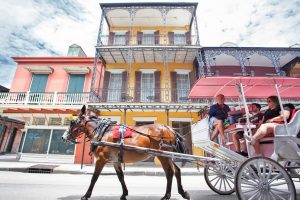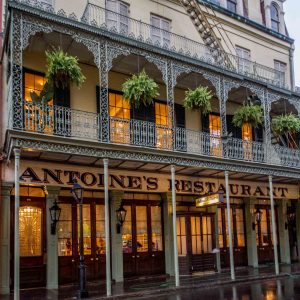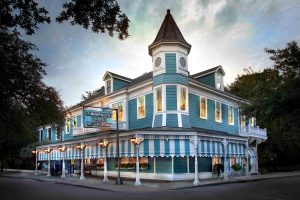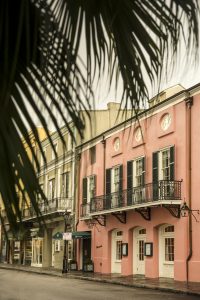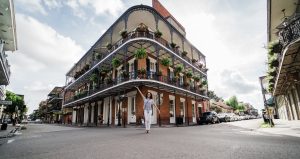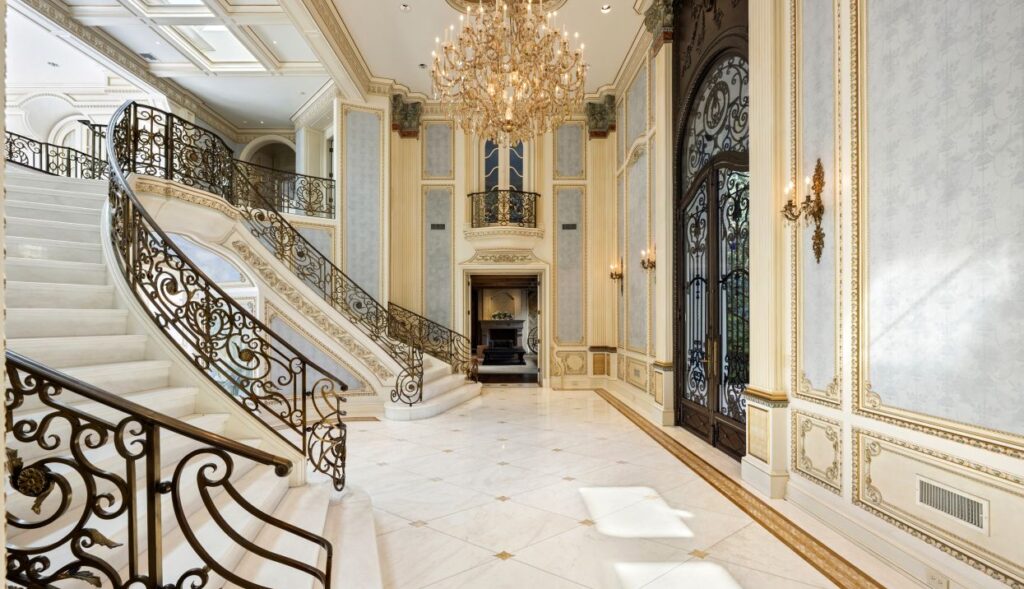Coined “The Big Easy” for its feel-good, music-oriented, history-flooded nature, New Orleans, Louisiana is an eclectically whimsical place with something for everyone, especially those who like to eat! French Colonial and Spanish architecture beautifully dress the streets of this lively city, creating an unbeatable cultural experience, and giving a glimpse into the incredible history of the area. New Orleans is known not only for its extraordinary architecture, but also its authentic Creole cuisine that can be found all around the ‘Crescent City’. A complete paradise for jazz and music lovers, you can find music on any corner of any street, any time, any day! Are you getting the picture?
New Orleans is well-known for its extravagant parades held during Mardi Gras, and the buzzing popularity of Bourbon Street, but there is so much more to this special hot spot than just the parties. The French Quarter is the historic heart of the city of New Orleans where authentic restaurants, antique shops, and dazzling live jazz music can be found.
Many of the features that make New Orleans, New Orleans, stem from century-old traditions, including Mardi Gras parades and balls. New Orleans was founded by the French and ruled by the Spanish for 40 years until the French regained control and eventually sold New Orleans to the United States in the 1803 Louisiana Purchase. While under Spanish rule, trade was heavily concentrated with Latin American and Carribean countries, bringing in cultural influences and making New Orleans known for Creole inspirations. Resting on the bend of the Mississippi River, New Orleans has been a major port since the 1700s, bringing them wealth and leading to a technological revolution in the 1900s with streetcars and the birth of New Orleans jazz.
The country’s oldest family-run restaurant is found in New Orleans. Antoine’s, on St. Louis Street, opened in 1840 and survived multiple wars, the Great Depression, and Prohibition. The birthplace of Oysters Rockefeller and the home of scrumptious French-Creole fine dining.. Creole cuisine blends West African, Spanish, French and Southern influences together to create flavorful, spicy, sophisticated meals. Crawfish are a staple of New Orleans and you can experience a delicious crawfish boil on almost every street you pass.
When visiting New Orleans, there is so much that you must see, but the list of foods that to try is probably the longest. You will not leave New Orleans hungry. From gumbo, po-boys, and jambalaya, to beignets, king cake, and bananas foster, everything you try will leave you completely speechless. Hit Cafe Du Monde for to-die-for beignets, and Brennan’s for Bananas Foster. Galatoire’s on Bourbon Street, is another popular, authentic New Orleans restaurant, serving some of the best gumbo you can find. Commander’s Palace, located in the Garden District, has been recognized for its award-winning cuisine and elegant jazz performances, along with the stunningly historical architecture.
When it comes to happy hour, New Orleans is about as well known for its libations as for its cuisine. Probably the most famous and delicious drink in New Orleans is a Hurricane from Pat O’Brien’s. Created during World War II, and served in a glass resembling a hurricane lamp, you will be filled with rum and history by the time you are ready for round two. Another must-try beverage while visiting New Orleans is the Hand Grenade from Tropical Isle. Be careful with this one, it tastes like an ice pop and it will creep up on you, fast. For the liquor connoisseurs, a Sazerac from The Sazerac, was invented in New Orleans almost a century ago. There are around twenty drinks that are native to and iconic in New Orleans and many visitors make it their goal to try all twenty before they leave.
The French Colonial and Spanish architecture found in New Orleans ties the vibrancy of the city together. Many of the mansions that dress the live-oak lined St. Charles Avenue retain their original designs, taking you back to 19th-century affluence. The Garden District is home to the most prominent and wealthy neighborhood in New Orleans. Here you will find marvelous homes such as the Walter Grinnan Robinson House, built in 1859 and flaunting glorious wraparound galleries. Another Garden District must-see is the Joseph Carroll House, a 3-story pink mansion with cast iron balconies, built in 1869. St. Louis Cathedral is one of the most recognizable buildings in New Orleans. The Cathedral’s perfect symmetry and Spanish Colonial architecture make it one of the city’s most visited landmarks. While wandering through the French Quarter, you will notice impressive 4-story, red brick structures with cast iron verandas called the Pontalba Buildings. Once serving as an arsenal for Union troops, they are now one of the best spots to watch the parades during Mardi Gras.
Beyond eating or exploring the beautiful architecture, there are a plethora of activities to do while in New Orleans. During the day, stroll through the 350-acre Audubon Park or, if you are more adventurous, check out a voodoo or ghost tour. Considered one of the most haunted cities in America with a foundation built on voodoo, you will not be disappointed with this thrilling twist on the history of New Orleans. Take a tour around the bayou and get a glimpse of some alligators. If you are looking to enjoy some great music without the hectic nature of the French Quarter, head over to Frenchman Street or Tchoupitoulas Street. Music flows through the veins of this street at jazz bars, breweries, bookstores, record shops, and cafes. Go to The Spotted Cat or Tipitina’s for amazing jazz performances and immaculate vibes.
If you visit New Orleans during Mardi Gras, you are in for a treat. The city celebrates for nearly a month leading up to the ultimate New Orleans experience, Fat Tuesday. Chow down on some king cake to start the day, then head into town to enjoy thousands of spectacular floats at one of the many parades. If you want to enjoy the ritzier side of Mardi Gras, experience one of its balls (if you can score an invite). Most of the Mardi Gras balls are exclusive affairs, but they are truly a special lost piece of history. Mardi Gras is not the only time the city is filled with parades. The city of New Orleans is an extremely LGBTQ friendly area and you can find huge parades and parties around the city during Southern Decadence, New Orleans’ pride celebration.
If you are wondering where to stay while visiting New Orleans, there are multiple luxurious accommodations throughout the city. Right in the middle of the French Quarter is the historic Hotel Monteleone. With fifty-five suites, the famous Carousel Bar, and beautiful amenities, a stay at Hotel Monteleone will be the cherry on top of your New Orleans trip. If you are looking outside the bustle of the French Quarter, The Roosevelt is still only steps away, but a bit quieter. Exquisite accommodations and amenities are found at The Roosevelt with a rooftop pool and lavish suites. Another option is the Windsor Court Hotel, boasting an old world charm and spectacular views of the city and the Mississippi River. Outside of the main action, there has been a recent uprising of boutique hotels in the Garden District. One example is Hotel St. Vincent on the corner of Magazine Street, which features 75 boutique rooms and was originally built in 1861 but restored and turned into a hotel this year.
With its history and charm, New Orleans, Louisiana is one of the most uniquely memorable places to visit. Whether you want to eat your heart out, drool over the endless array of gorgeous architecture, or experience some of the best undiscovered jazz artists in the world, New Orleans is the place for you. If you do not believe in love at first sight, visit New Orleans and get back to me.

